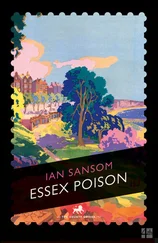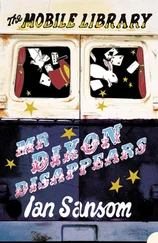*
Or maybe he’s just posing. He’s pouting. He’s sitting for a portrait.
(There is no recent book-length study of the phenomenon of the poet as pin-up, as far as I know. The best I can find is David Piper’s The Image of the Poet , which was published in 1982, long before our current crop of selfie-loving Insta poets. Auden would have made an excellent Insta poet: he loved the camera. He was arguably – at least, I shall argue here, now – the first poet of the technologised twentieth century, his career formed not just through books but through the media of film, photography, radio, television, mass-circulation newspapers and poetry readings. Not only was he enormously ambitious, he was endlessly inventive. He used all the tools available to him. He took a camera to Iceland in 1936, and the photographs were included in his and MacNeice’s travelogue, Letters from Iceland . At his parties in the 1950s, long before Warhol’s snapping and spooling at the Factory, he would go around photographing his guests. The critic Edmund Wilson describes a truly Warholian scene at Auden’s birthday party in 1955: ‘Hordes of people arrived; the room became crowded and smoke-filled and the conversation deafening. Wystan went around with a camera taking flashlights of his guests. When he came to the group in which I was, I hung a handkerchief over my face at the moment he was taking the picture.’)
*
Or perhaps he’s ‘sitting in’, in the way a jazz musician sits in on a session.
The songwriter and historian of American popular music Arnold Shaw explains what it means to ‘sit in’:
A man who sits in plays music that is unrehearsed, improvised and spontaneous. But the difference is that he invades a place where a set group of musicians is in residence at union rates. He comes for the sheer love of playing, for the stimulus of exchanging ideas with others, for the pleasure of speaking and communicating through his instrument.
‘Sitting in’ implies a freedom of movement, a body of shared feelings and a camaraderie that tended to disappear with the rise of bop and with the stringent enforcement of union regulations against free play. It was also based on a rare community of interests between performer and audience that placed communication and expression on the same level as entertainment . When the adventure worked, all three phases were present at a peak of excitement.
(Arnold Shaw, 52nd St: The Street of Jazz )
Communication, expression, entertainment: as good a definition as any of what one might expect from a work of art.
*
Of course, the mere fact of sitting – whatever kind of sitting it is – says something. It says, ‘I am here with you.’ When we sit next to somebody we are sitting with them. We sit alongside them, or opposite them. We sit shiva. We sit and wait. We sit and eat.
‘You must sit down’, says Love, ‘and taste my meat.’
So I did sit and eat.
(George Herbert, ‘Love: Love bade me welcome’)
In The American Journal of Nursing , vol. 70, no. 5 (May 1970), there is a letter to the editor from Louise Ryssmann, R.N.:
I would like to contribute this idea to other nurses. When I am talking with patients, I sit in a chair next to the bed, rather than standing. By sitting, I can establish a closer rapport with patients because the physical distance is less and I am talking directly across rather than down to the patient. Sitting also creates a more relaxed atmosphere and the patient feels the nurse is not rushed and has time to talk. And as an additional benefit, I am not nearly as tired at the end of an eight-hour shift.
At the beginning of the poem Auden settles down, establishes a close rapport and starts to talk. Like a nurse, or a priest, or a therapist.
Or a man in a bar.
A Not Insignificant Americanism
I want the poem to be completely American in language.
(Auden on The Age of Anxiety , in The Table Talk of W. H. Auden )
*
So, the speaker of the poem is sitting in a dive, and a dive, according to the OED , is ‘An illegal drinking-den, or other disreputable place of resort, often situated in a cellar, basement, or other half-concealed place, into which frequenters may “dive” without observation.’
A dive is not, therefore, just a place to be seen or to look, but a place to disappear.
Auden is using a half-concealed place as a site of contemplation.
*
‘Dive’, by the way, is an Americanism. It’s worth pointing out. It is not insignificant.
*
In a poem for his old friend Louis MacNeice, Auden wrote of his own desire to become a ‘minor Atlantic Goethe’.
Which is exactly what he became.
*
He took the oath of allegiance and became an American citizen on 20 May 1946. His Collected Poetry had been published in America by Random House a year previously and had gone into its fourth impression, having already sold over 14,000 copies. (That’s a lot of copies for a book of poems. It’s a lot of copies for a book of anything. I would love a book of mine to sell 14,000 copies – even a third of 14,000 copies would do, a quarter. A tenth. I’ll be honest, I’d take a tenth.) On this evidence, the critic Edmund Wilson pronounced that Auden had achieved ‘almost the circulation of an American family poet’. Auden had, in other words, made it in America.
*
Though for America, one should probably read New York.
Who am I now?
An American? No, a New Yorker,
who opens his Times at the obit page.
(Auden, ‘Prologue at Sixty’)
He had arrived in New York with Christopher Isherwood on 26 January 1939. The two men had already visited America in the summer of 1938, on their way back from China, but this time they were there to stay.
On arrival in New York, they found rooms in the George Washington Hotel on 23rd Street and Lexington Avenue, and by spring 1939 they had moved into an apartment together on East 81st Street. Auden began reviewing for magazines and started to undertake speaking and lecturing engagements. He was getting his feet under the table.
*
Their departure from England caused considerable controversy. During 1940, the pages of Cyril Connolly’s magazine Horizon were given over to a long-long-running debate about the rights and wrongs of the two young men’s decision to remain in America, and in June 1940 Sir Jocelyn Lucas MP asked in the House of Commons ‘whether British citizens of military age, such as Mr. W. H. Auden and Mr. Christopher Isherwood […] will be summoned back for registration and calling up, in view of the fact that they are seeking refuge abroad’. The whole fuss was satirised by Evelyn Waugh in his novel Put Out More Flags (1942), in which Auden and Isherwood are caricatured as Parsnip and Pimpernell: ‘The name of the poet Parsnip, casually mentioned, re-opened the great Parsnip-Pimpernell controversy which was torturing Poppet Green and her friends.’
Poor little Poppet.
*
(It’s easy to mock, but I too have taken Auden’s move to America personally, as a kind of rebuke, just as I’ve done with friends who’ve moved to America over the years. I mean, it always makes one wonder, doesn’t it? Shouldn’t I? Couldn’t I? What might have been, could have been? As I get older, it gets worse, the challenge seems all the greater. ‘What have I done for you, / England, my England?’ asks W. E. Henley in his much-maligned poem ‘Pro Rege Nostro’. Not a lot, is the honest answer: paid my taxes, kept out of trouble, apologised unnecessarily as and when required, and suffered in silence as the country becomes slowly but surely despoiled and divided up among tax-shy corporations and the south-east super-rich. Why not go to America, Auden seems to be asking, if you’re just going to sit around complaining and doing nothing?)
Читать дальше












